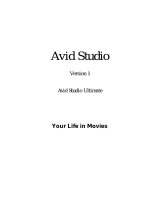2 Middle Track These clips are under the top track, but above the bottom
track. The moon image is on this track in the illustration.
3 Bottom Track These clips are under all other tracks. The sunset is on
this track in the illustration.
Controlling Playback of Video
Playing, Pausing, and Seeking are very important features in a video editor. While
you are creating a video project, you will need to playback the project over and over
again. While clicking on the Play button is an easy way to accomplish this, there are
many faster ways.
Playback Methods
There are 7 ways to control the video playback in OpenShot.
● Click the Preview Toolbar (Play, Fast-forward, etc...)
● Dragging the Slider above the Preview Toolbar
● Dragging the Play-Head on the Ruler
● Clicking on the Ruler at any point
● Using Keyboard Shortcuts (J, K, L keys)
● Using the Arrow Buttons (Left, Right, Up, Down)
● Using the Space bar key (Play / Pause)
Keyboard Short-Cuts
A keyboard short-cut is simply a key on the keyboard that saves you the trouble of
moving your mouse and clicking. It is often faster to type a key, than to point and
click. Here are all keyboard short-cuts in OpenShot:
key description
C or S Cut all tracks at the playhead position.
J Rewind the video playback
K Pause / Play
L Fast-forward the video playback
Ctrl + B Open the 3d Title Editor.
Ctrl + D Take a snapshot of the current video frame.
Ctrl + E Open the Export Window.
Ctrl + F Open the File Import Window.
Ctrl + I Open the Image Sequence import Window.
Ctrl + N Create a new project.
Ctrl + O Open an existing project.
Ctrl + P Open the Preferences Window.
Ctrl + Q Exit Openshot.
Ctrl + S Save the current project.
Ctrl + T Open the Title Editor.




















